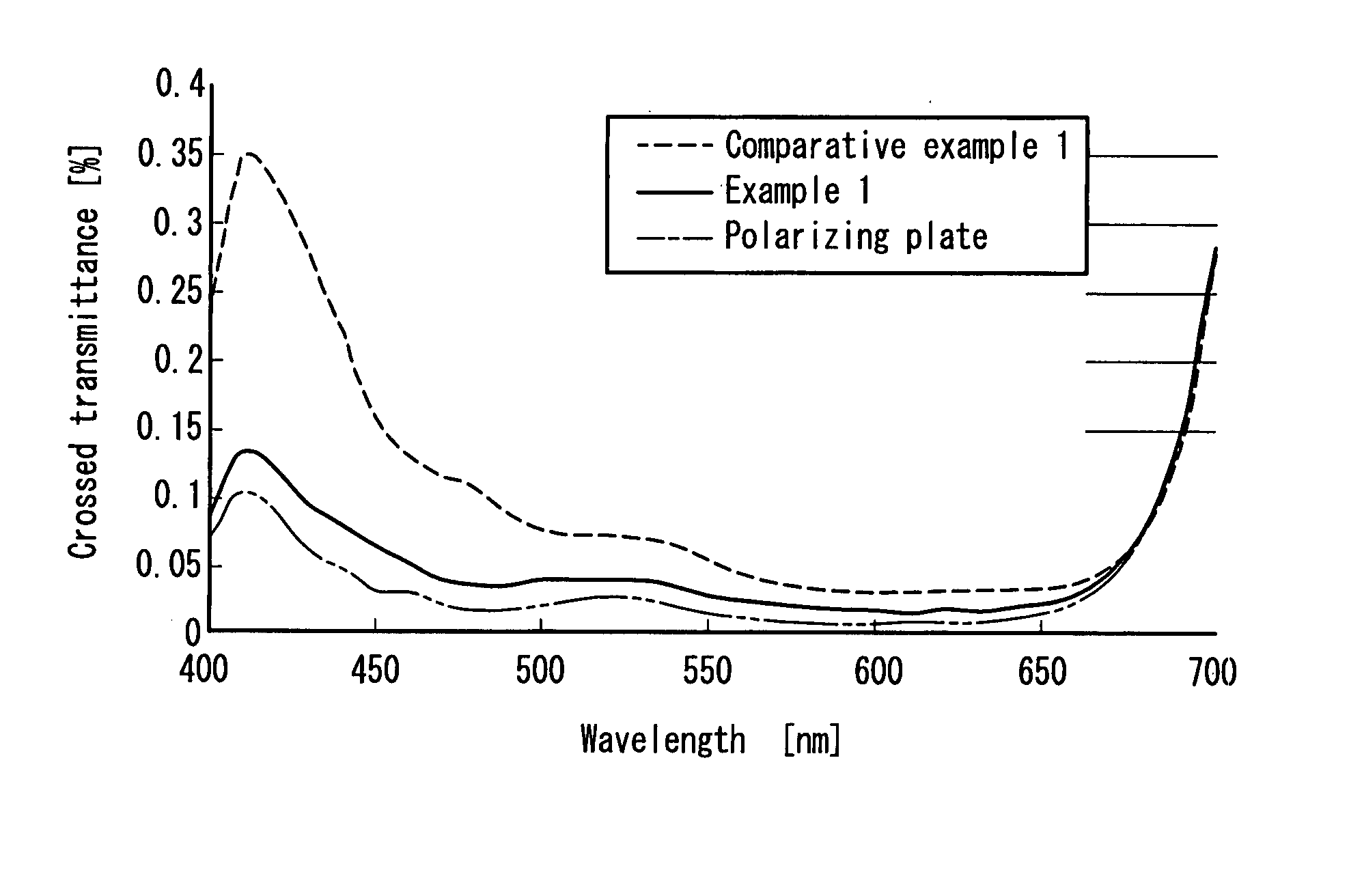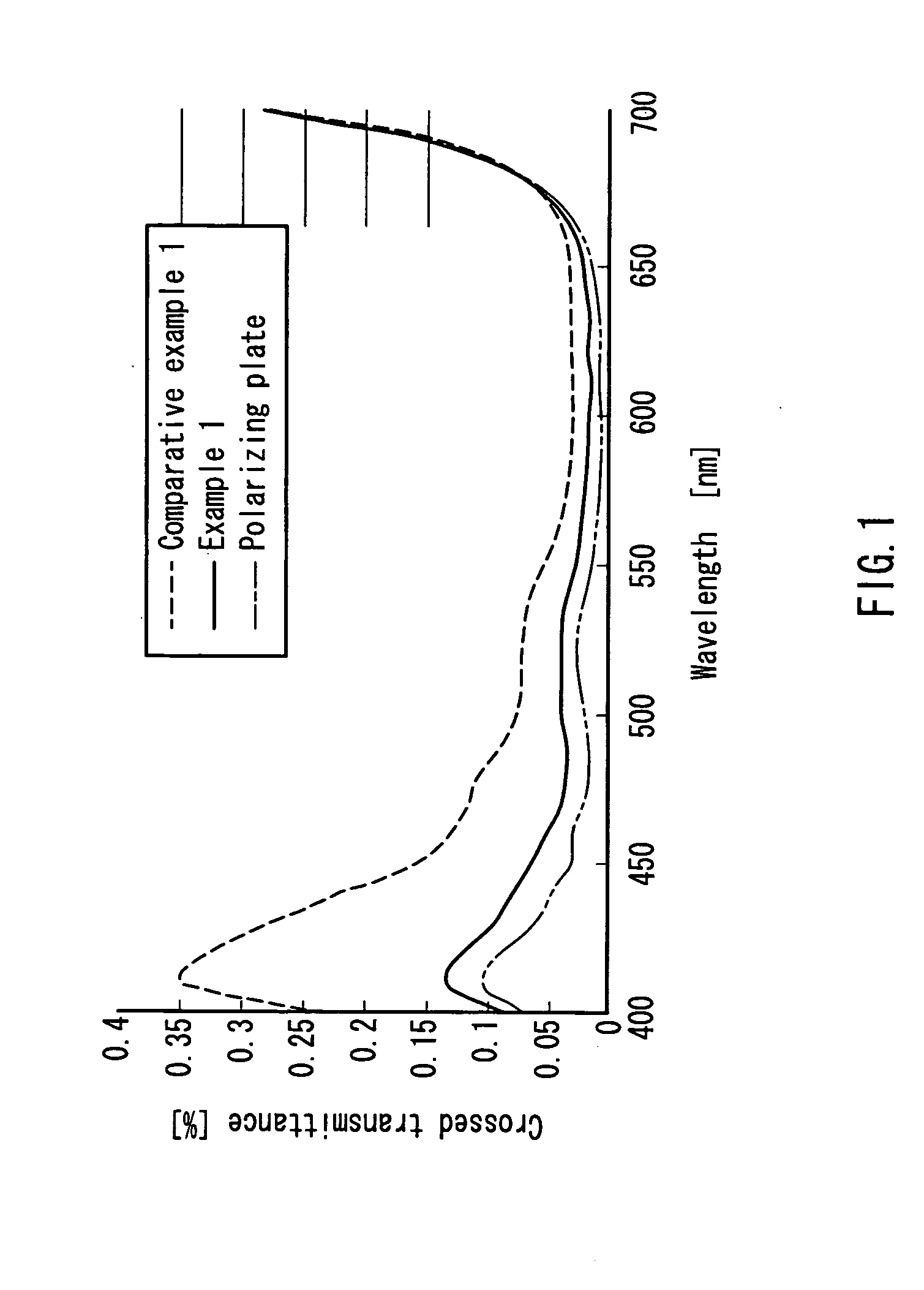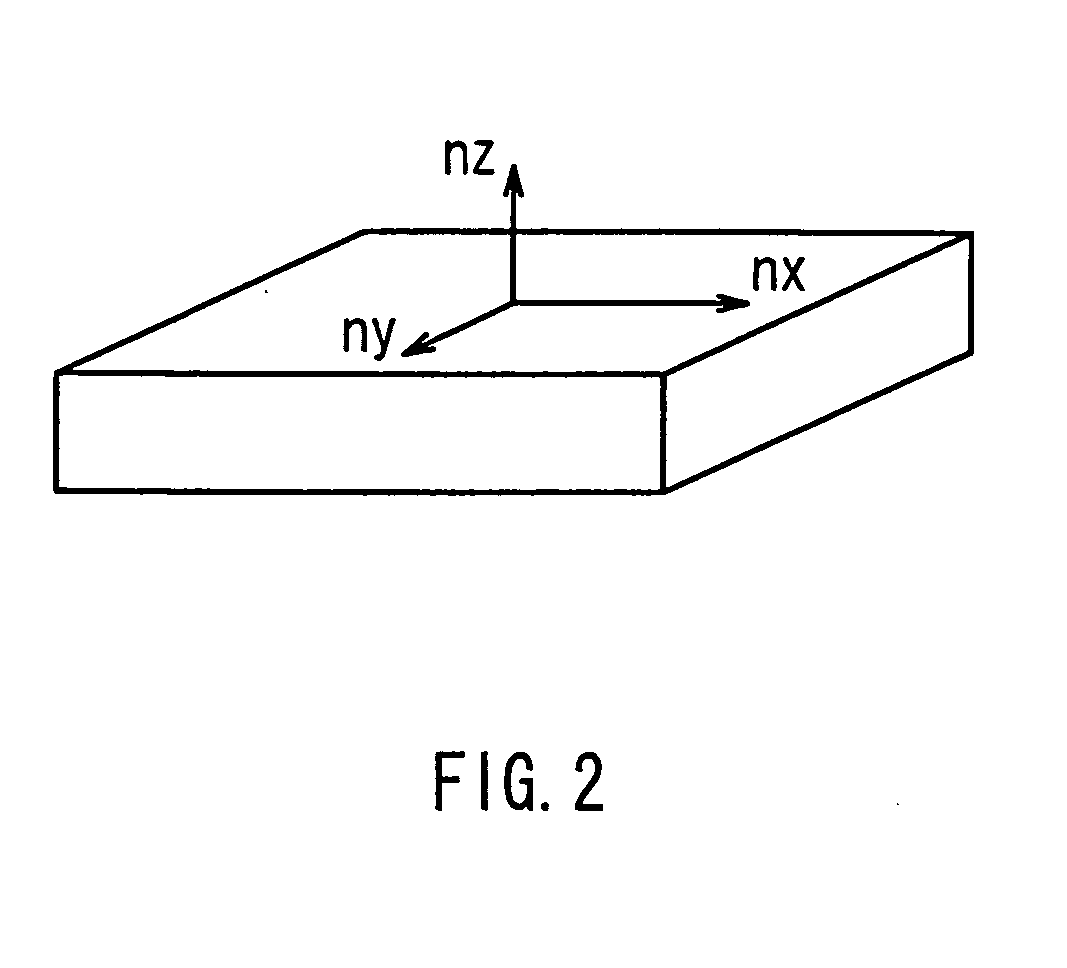Optical film, method for manufacturing the same, and phase difference film and polarizing plate using the same
- Summary
- Abstract
- Description
- Claims
- Application Information
AI Technical Summary
Benefits of technology
Problems solved by technology
Method used
Image
Examples
example 1
First, 90 parts by weight of a nematic liquid crystal monomer represented by the chemical formula (10) below, 10 parts by weight of a polymerizable chiral dopant having a helical twisting power of 5.5×10−4 nm−1.(wt %)−1 represented by the formula (38) below, 5 parts by weight of a UV polymerization initiator (trade name: IRGACURE 907; manufactured by Ciba Specialty Chemicals, used also in the following examples) and 300 parts by weight of methyl ethyl ketone were mixed. Then, this mixture was applied onto an alignment substrate (a polyester film with a thickness of 75 μm). Thereafter, this mixture was subjected to a heat treatment at 70° C. for 3 minutes, thereby aligning the monomer. Subsequently, the monomer was polymerized by an ultraviolet irradiation so as to fix the orientation. Then, the alignment substrate was removed, thus obtaining a completely transparent and smooth retardation film having a thickness of about 2 μm. This retardation film was a birefringent layer of nx≈ny...
example 2
In a manner similar to that in Example 1, 92 parts by weight of the nematic liquid crystal monomer represented by the chemical formula (10) above, 8 parts by weight of the polymerizable chiral dopant having a helical twisting power of 5.5×10−4 nm−1.(wt %)−1 represented by the chemical formula (38) above, 5 parts by weight of the UV polymerization initiator and 300 parts by weight of methyl ethyl ketone were mixed. Then, this mixture was applied onto an alignment substrate (a polyester film with a thickness of 75 μm). Thereafter, this mixture was subjected to a heat treatment at 80° C. for 3 minutes, thereby aligning the monomer. Subsequently, the monomer was polymerized by an ultraviolet irradiation so as to fix the orientation. Then, the alignment substrate was removed, thus obtaining a completely transparent and smooth retardation film having a thickness of about 2 μm. This retardation film was a birefringent layer of nx≈ny>nz and had a selective reflection wavelength range of 29...
example 3
In a manner similar to that in Example 1, 91 parts by weight of the nematic liquid crystal monomer represented by the chemical formula (10) above, 9 parts by weight of the polymerizable chiral dopant having a helical twisting power of 5.5×10−4 nm−1.(wt %)−1 represented by the formula (38) above, 5 parts by weight of the UV polymerization initiator and 300 parts by weight of methyl ethyl ketone were mixed. Then, this mixture was applied onto an alignment substrate (a polyester film with a thickness of 75 μm). Thereafter, this mixture was subjected to a heat treatment at 80° C. for 3 minutes, thereby aligning the monomer. Subsequently, the monomer was polymerized by an ultraviolet irradiation so as to fix the orientation. Then, the alignment substrate was removed, thus obtaining a completely transparent and smooth retardation film having a thickness of about 2 μm. This retardation film was a birefringent layer of nx≈ny>nz and had a selective reflection wavelength range of 240 to 260 ...
PUM
 Login to View More
Login to View More Abstract
Description
Claims
Application Information
 Login to View More
Login to View More - R&D
- Intellectual Property
- Life Sciences
- Materials
- Tech Scout
- Unparalleled Data Quality
- Higher Quality Content
- 60% Fewer Hallucinations
Browse by: Latest US Patents, China's latest patents, Technical Efficacy Thesaurus, Application Domain, Technology Topic, Popular Technical Reports.
© 2025 PatSnap. All rights reserved.Legal|Privacy policy|Modern Slavery Act Transparency Statement|Sitemap|About US| Contact US: help@patsnap.com



